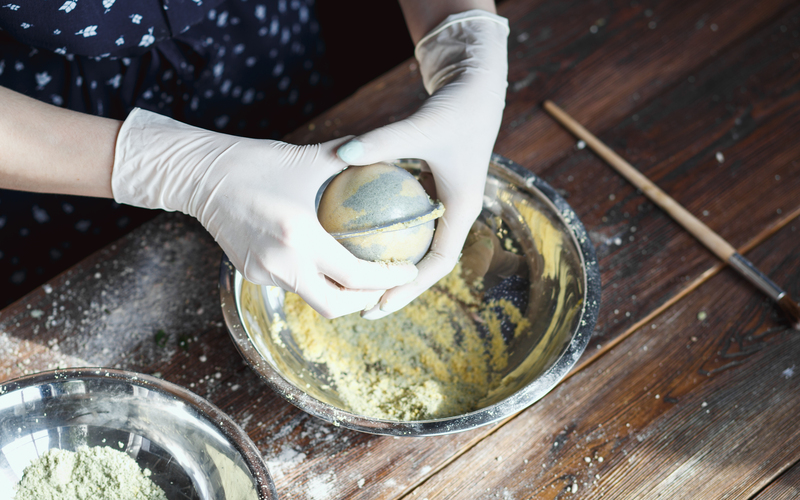Eliminate Mould from Window Sills with These Handy Tips
Posted on 04/06/2025
Eliminate Mould from Window Sills with These Handy Tips
Mould on window sills is not just unsightly - it can pose serious health risks and damage your home's structure. Whether you're battling a persistent patch or want to prevent future outbreaks, learning how to eliminate mould from window sills is essential. In this comprehensive guide, we'll equip you with practical mould removal methods, prevention techniques, and vital information about why window sills are so susceptible to mould growth.
Understanding Mould Growth on Window Sills
Before diving into solutions, it's important to understand why mould appears on your window sills. Mould is a type of fungus that thrives in damp, humid environments. Window sills, especially in the kitchen, bathroom, or rooms with poor ventilation, often accumulate moisture. This creates an ideal breeding ground for mould spores.
Common Causes of Mould on Window Sills
- Condensation: Windows are natural condensation points, especially during colder months.
- Poor ventilation: Without adequate airflow, moisture lingers longer.
- Leaky windows: Faulty seals or frames allow water to seep in.
- High indoor humidity: Appliances and daily activities raise moisture levels.
- Neglected maintenance: Dirty or dusty sills trap more moisture.

Why You Should Remove Mould Promptly
Mould is more than a cosmetic nuisance. Removing mould from your window sills is crucial because mould spores may cause:
- Allergic reactions (sneezing, watery eyes, skin irritation)
- Asthma attacks and respiratory issues
- Structural damage to timber window frames and sills
- Unpleasant, persistent musty odours
The sooner you remove mould from window sills, the easier it is to prevent these problems.
Essential Safety Precautions Before Removing Mould
Before you start the cleaning process, prioritise your safety:
- Wear gloves, goggles, and a mask to avoid direct exposure to spores.
- Open windows for better ventilation - but be mindful of pollen if you have allergies.
- Keep pets and children away from the affected area during cleaning.
- Always test cleaning solutions on an inconspicuous area first.
How to Eliminate Mould from Window Sills: Step-by-Step Guide
1. Gather Your Cleaning Supplies
- Protective gloves and mask
- Microfiber cloths or disposable paper towels
- A soft brush or old toothbrush
- Spray bottle
- Mild detergent or specific mould removal solution
- White vinegar or hydrogen peroxide (for natural cleaning)
- Baking soda (for stubborn patches)
- A bucket of warm water
2. Remove Surface Mould Gently
Begin by wiping down the window sill with a damp cloth to remove any loose dust and visible mould patches. Avoid scrubbing dry, as this can release spores into the air.
3. Apply a Mould Removal Solution
Choose your cleaning product carefully:
- Commercial mould sprays: Effective for larger or deeply ingrained mould spots. Always follow the manufacturer's instructions.
- White vinegar: Fungi cannot survive the acidic environment. Pour undiluted vinegar into a spray bottle, spritz on the mould, let it sit for at least an hour, then wipe away with a clean cloth.
- Hydrogen peroxide: As a natural disinfectant, spray 3% hydrogen peroxide directly on the mould. Wait 10 minutes, then scrub and rinse.
- Baking soda: Mix a tablespoon with water to form a paste. Dab this onto stubborn patches with a toothbrush, let it set for 10-15 minutes, then rinse.
4. Scrub and Repeat if Needed
Use a soft brush to lift embedded mould - but avoid abrasive brushes that can scratch painted or varnished surfaces. For persistent stains, you may have to repeat the process.
5. Rinse and Dry Thoroughly
Once you're satisfied the mould is gone, wipe the area with a damp cloth dipped in clean water to remove any residue. Dry the window sill thoroughly with a fresh towel or allow it to air dry in sunlight. This is crucial to prevent prompt regrowth.
6. Dispose of Cleaning Materials Properly
Carefully dispose of any paper towels, cloths, or sponges used to clean the mould. Seal them in a plastic bag before throwing them in the bin.
Preventing Future Mould Growth on Window Sills
Eliminating mould from window sills is only the first step - prevention is key. Here are expert tips to keep your windowsill mould-free:
Improve Ventilation
- Open windows daily to allow fresh air to circulate, especially after cooking or showering.
- Install extractor fans or ventilators in moisture-prone rooms.
Reduce Indoor Humidity
- Use a dehumidifier during humid weather or if condensation is a common issue.
- Maintain indoor humidity levels between 30-50%.
- Seal leaks or cracks in window frames to prevent water ingress.
Wipe Down Window Sills Regularly
- Dry condensation as soon as it forms.
- Clean sills with a mild detergent and dry thoroughly at least once a week.
Choose Mould-Resistant Paints and Sealants
- Apply anti-mould or water-resistant paints to wooden sills and frames.
- Consider caulking cracks where moisture could enter.
Keep Curtains and Blinds Clean
- Wash or vacuum fabric window coverings regularly to prevent mould spores building up.
- Keep blinds open during the day to allow air and light to reach the sill.
Monitor for Recurrence
- Inspect window sills after storms or damp weather.
- Deal with small spots promptly before they spread.
Natural vs. Chemical Mould Removers: Which Is Best?
Both natural remedies like vinegar and baking soda, and commercial mould removers can be effective for eliminating mould from window sills, but there are pros and cons to each:
- Natural options are eco-friendly, usually safe for families and pets, and less likely to damage most surfaces.
- Chemical cleaners are often stronger and may be necessary for severe, stubborn, or recurring infestations. Always check their safety for your windows' materials.
Tip: Never mix bleach with ammonia or vinegar - this can create harmful fumes. If in doubt, stick to one cleaner and ventilate the space well.
When to Consider Professional Mould Remediation
If the mould returns quickly even after thorough cleaning, or if you notice widespread infestation (greater than 1sq m), consider enlisting professional help. Professionals have the tools and expertise to:
- Remove deep-rooted mould from tricky spots
- Test air quality and identify hidden water leaks
- Repair or replace severely damaged window frames
- Offer advanced mould-proofing solutions
Persistent black or green mould, or presence of a strong musty smell, usually signals the need for expert intervention.
Remember: Mould remediation is also highly recommended if you have a weakened immune system, severe asthma, or chronic respiratory issues.
Frequently Asked Questions About Mould on Window Sills
Can I use bleach to clean mould from window sills?
Bleach is a common household disinfectant that can effectively kill mould on non-porous surfaces like uPVC or glass. However, it is less effective on porous materials such as wood, and may cause discolouration or even damage. Use bleach with caution, always diluted, and rinse thoroughly after use.
Why does mould keep coming back on my window sill?
Recurrence of mould indicates ongoing moisture problems. Check for hidden leaks, persistently high humidity, or blocked ventilation. Without addressing the root moisture cause, no amount of cleaning will keep mould away forever.
Is mould on window sills dangerous?
While small amounts of mould are unlikely to cause harm to healthy individuals, exposure over time can trigger allergies or worsen respiratory conditions. Vulnerable groups - especially children, the elderly, and those with pre-existing respiratory or immune conditions - should avoid contact and live in mould-free environments.
How do I keep wooden window sills mould-free?
Wooden window sills require extra care. Always dry wood thoroughly after cleaning, consider oiling, sealing, or painting with anti-mould finishes, and promptly address any signs of water damage.
Are steam cleaners effective at removing mould?
Steam cleaners can kill surface mould and sanitise window sills. However, they may not penetrate deep into porous materials where mould roots can survive. Use steam cleaning as a supplementary treatment, not your only method.

Key Takeaways: Banishing Mould from Window Sills
- Act quickly at the first sign of mould to prevent it spreading and causing health issues.
- Choose the right cleaning product - natural or chemical - for your window material.
- Dry and ventilate your window sills thoroughly after cleaning.
- Take preventive measures: reduce humidity, improve ventilation, and maintain regular cleaning routines.
- If in doubt or if the problem persists, seek professional mould removal services.
By following these handy tips to eliminate mould from window sills, you'll keep your windows looking clean, your living space fresh, and your family healthy. Don't wait - banish mould today and enjoy a brighter, safer home.
Ready to Say Goodbye to Window Sill Mould?
Eliminate mould from window sills with these expert-backed strategies and never let moisture threats jeopardise your comfort again. Regular maintenance, quick action, and a little diligence are all it takes to keep your window sills - and your whole home - mould-free!
For further reading: Want more cleaning tips for a healthier home? Explore articles on humidity control, window maintenance, and natural cleaning solutions right here on our site.



